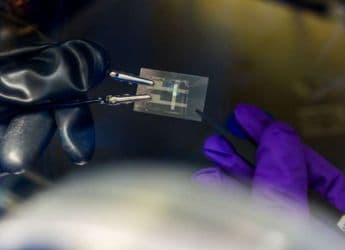- Home
- Apps
- Apps Features
- How to Prevent Theft of Photos From Your iCloud Account
How to Prevent Theft of Photos From Your iCloud Account

Nude photos of Jennifer Lawrence and other celebrities began circulating across the Internet on Sunday, with some reports blaming Apple's iCloud service that can automatically backup user photos and keep them long after they are deleted from user's phone.
If you're using iCloud, you might be worried about the pictures backed up there from your phone - regardless of the content of the pictures, nobody wants their personal photographs stolen.
As of now, it isn't clear whether it is an iCloud hack or if the photos were accessed through other vulnerabilities. Both FBI and Apple are investigating this incident and we will have more information once the investigations conclude. These steps will prevent your photos from automatically being uploaded to Apple's iCloud.
Turn off auto-upload and delete photos from iCloud
If you have an iPhone or iPad, all your photos are being uploaded to iCloud by default. Most people don't even realise that all their photos are being stored on iCloud servers. A quick way to check is by opening the Photos app and open the Albums view. All the photos in the album My Photo Stream are stored online. Here's how you can stop them being uploaded there.
1. On your iPhone and iPad, do this: Settings > Photos & Camera > My Photo Stream > Off. Now you'll see a warning "Turning off Photo Stream will delete all Photo Stream photos from your iPhone". Tap Delete and the photos in the My Photo Stream album will be removed. This doesn't affect photos stored locally on your device or other shared photo streams.
2. Mac users can do the same by going to System Preferences > iCloud > uncheck Photos.
If you want to keep auto-upload on, but just want to delete some photos from your iCloud account, open Photos > Albums > My Photo Stream > tap Select and pick the photos you don't want to store online > tap the trash can at the bottom right.
Stronger passwords
We've been strong advocates of using strong passwords and different passwords for different accounts. If you still have a weak iCloud password, change it to a stronger one with uppercase, lowercase characters, numbers and symbols. Here's how.
1. Open the Apple ID page on Apple's website. Sign in and answer the two security questions. Now click Change password.
2. On iOS devices, open the App Store and scroll to the bottom. Tap Apple ID > Apple ID > enter password and Sign in > tap Password to key in your new password and tap Verify to type it again. Tap Done to complete the process.
(Also see: Seven Ways to Create Better, Stronger Passwords)
Two Factor Authentication
We also recommend that you use two-factor authentication for your Apple ID, which sends you a code via text message or an associated Find My iPhone app every time you log in. Without entering this code, no one can log in - even if hackers are able to guess or hack your password. This means that to access your account, people need to know your username, your password, and also have physical possession of your phone - it's a little inconvenient, but adds a lot of security. You can set this up through the Apple ID page.
1. Open the Apple ID page on Apple's website. Sign in and answer the two security questions. Now click 'Get Started' near the top to enable two-factor authentication.
2. Follow the on-screen instructions to save your phone details.
These steps should help you protect your iCloud photos from unauthorised access. For more useful articles, visit our How to section.
Get your daily dose of tech news, reviews, and insights, in under 80 characters on Gadgets 360 Turbo. Connect with fellow tech lovers on our Forum. Follow us on X, Facebook, WhatsApp, Threads and Google News for instant updates. Catch all the action on our YouTube channel.
Related Stories
- Samsung Galaxy Unpacked 2025
- ChatGPT
- Redmi Note 14 Pro+
- iPhone 16
- Apple Vision Pro
- Oneplus 12
- OnePlus Nord CE 3 Lite 5G
- iPhone 13
- Xiaomi 14 Pro
- Oppo Find N3
- Tecno Spark Go (2023)
- Realme V30
- Best Phones Under 25000
- Samsung Galaxy S24 Series
- Cryptocurrency
- iQoo 12
- Samsung Galaxy S24 Ultra
- Giottus
- Samsung Galaxy Z Flip 5
- Apple 'Scary Fast'
- Housefull 5
- GoPro Hero 12 Black Review
- Invincible Season 2
- JioGlass
- HD Ready TV
- Laptop Under 50000
- Smartwatch Under 10000
- Latest Mobile Phones
- Compare Phones
- Poco F8 Ultra
- Poco F8 Pro
- Huawei Mate 80 RS Master Edition
- Huawei Mate 80 Pro Max
- Huawei Mate 80 Pro
- Huawei Mate 80
- Huawei Mate X7
- Honor 500
- Asus ProArt P16
- MacBook Pro 14-inch (M5, 2025)
- Poco Pad M1
- Poco Pad X1
- Honor Watch X5
- Huawei Watch Ultimate 2
- Acerpure Nitro Z Series 100-inch QLED TV
- Samsung 43 Inch LED Ultra HD (4K) Smart TV (UA43UE81AFULXL)
- Asus ROG Ally
- Nintendo Switch Lite
- Haier 1.6 Ton 5 Star Inverter Split AC (HSU19G-MZAID5BN-INV)
- Haier 1.6 Ton 5 Star Inverter Split AC (HSU19G-MZAIM5BN-INV)
















